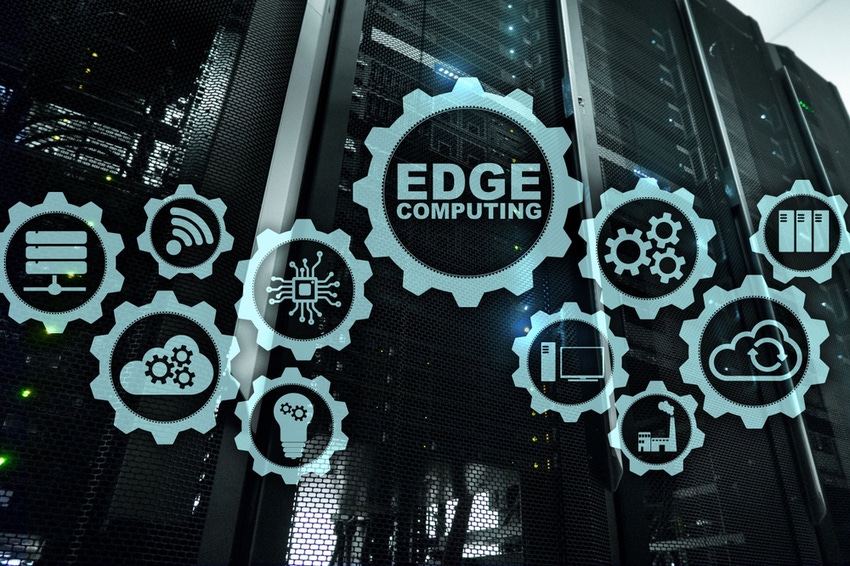Managing and securing new distributed environments brings opportunity for channel around edge computing.

There has been much talk as to how technologies like IoT and 5G will impact where and how companies collect and process data.
The answer is that their growth is fueling the move away from centralized data processing. It is shifting to where data is increasingly generated, processed and consumed — the “edge” of the network. Indeed, Gartner has stated that by 2025, 75% of enterprise data is expected to be created and processed at the edge.
However, the opportunity for the channel around edge computing may arrive much earlier than that. Forrester analyst Jay McBain says the move to remote working during the early stages of COVID-19 in March fueled an increase in procuring and provisioning edge products for 72% of channel partners.
Now in August, McBain says customers are talking about automation, cloud acceleration, security, compliance and governance of this new edge topology.

Forrester’s Jay McBain
“We have business professionals at home on a consumer notebook, on a consumer network, going through a consumer router, shared with their neighbors getting access to enterprise class data and systems,” he said. “Securing this remote topology at every layer from physical security to edge authentication, network and web, applications and data is top of mind and a growing opportunity for the channel.”
Where to Begin
So where should the channel start with edge computing? For UK channel firm EfficiencyIT, the opportunity lies in pinpointing the customer’s exact business needs.
“Consultancy is crucial, and there isn’t one single answer to each of our customers’ problems; everyone is different and that’s the approach we take,” said managing director Nick Ewing. “Rolling out edge computing isn’t the same as selling PCs. Every data center is sized differently; it’s housed in a different location and uses different technologies. We go in, identify the pain points and help them overcome them. Usually it’s to do with knowing what’s happening with their IT and when.
“Customers are pretty good at identifying what they need their technology to do,” Ewing added. “They are less comfortable at being able to identify exactly what they have, where it’s located and how it can best be deployed and managed to support their business. That’s where we really find our sweet spot, helping our customers visualize their IT environments so they can monitor and manage both their local IT and wider edge compute.”
2 Types of Partners
Unsurprisingly, a growing number of vendors are recognizing the move to edge computing and are tailoring their partner engagement accordingly.
Schneider Electric recently expanded its partnerships with Lenovo, Stratus Technologies and industrial software specialist AVEVA. It wanted to produce new reference designs and pre-integrated systems that address the convergence of IT and OT — a key market for edge computing.

Schneider Electric’s David Terry
“Within that space there is a greater need for the skills of two different partner types, IT solutions providers and industrial systems integrators,” said David Terry, VP, IT channels, Schneider Electric, Europe.
As such, the firm has created an ‘Industrial Edge Community,” which allows the two groups to engage with each other and facilitate new business on IT/OT projects. It has also added a new edge module to its Opportunity Registration Program (ORP). So this offers partners greater margins and profits for …
… selling pre-integrated edge solutions.
The Vertical View
Schneider’s research with analyst Canalys found that partner priority verticals for IoT solutions are health care (37%), manufacturing (33%) and industrial (23%). However, the edge opportunity extends into other areas too, including financial services (20%), education (19%) and government (18%).
“Outages and interruptions to operations especially remain a key concern for end users,” said Terry. “In the research, channel partners reported that an average of 75% of their end users cited downtime as detrimental to their business. Today, with customers rapidly transitioning to work-from-home models, that [is] even more critical. More strain has been placed on network infrastructure and IT systems very quickly. The thing about the edge is that applications are business-critical, meaning that any downtime has an immediate impact — be it loss of service or revenue.
“Here, partners have an opportunity to educate their customers,” Terry added. “They can take them through the design, specification and deployment process — ensuring that the IT systems that underpin their operations are resilient and reliable. Furthermore, due to the distributed nature of these edge environments, customers don’t have the skills or the resources to deploy IT personnel on every site. Management and servicing remain a key opportunity for partners, which of course drives recurring revenue.”
Securing the Edge
To McBain’s point, the move to remote working means the ability to securely connect to these cloud and corporate applications has become a mandate.
Alongside distributor Nuvias, Versa Networks has launched Versa Secure Access in Europe. It is a work-from-home solution that performs application segmentation, allowing secure network access.
The offering is part of the Versa SASE (Secure Access Service Edge) framework. Introduced by Gartner in 2019, SASE is the convergence of wide area networking (WAN) and network security services in either the cloud, on premises, or a combination of both.

Versa Networks’ Michael Wood
“The advanced SD-WAN, SASE, and security benefits integrated in a managed and cloud-delivered SaaS service significantly reduce cost and complexity compared with on-premises solutions, making it an easy sell for channel partners,” said Michael Wood, CMO at Versa Networks.
The offering “addresses the need for customers to preserve capital in the current challenging environment whilst cutting operational costs and enabling remote management of networks and users,” added Rob Clark, director of technologies and solutions development at Nuvias Group.
Channel Challenges
As with any opportunity however, challenges exist for the channel.
Competition is strong, according to Geraint Talbot-Davies, managing director, cloud, data and security at Intercity Technology. He says it is necessary to reach the customer first “to explain edge computing can be flexible and to shape it the way each customer needs it done optimally for them, not the colo provider or service provider.”
However, he notes that the edge is not …
… primarily about connectivity networks. And even though security definitions are also critical, it is about content and computing. Therefore, channel partners should mix niche content that needs computer processing with secured sites and access networks to gain advantage in the wider battle with the competition.
“Channels should be able to achieve and demonstrate a better understanding of the local and niche needs of many customers and businesses that do not wish to fit into the wider ‘pigeon hole’ that large players might prefer to put them into,” he said.
Fit-for-Purpose Solutions
Ultimately, there is some advice that applies as well to edge computing as it does to any other IT service offering: Establish yourself as a trusted adviser to your customer. That means understanding precisely what the customer needs and matching the technology to realise their own business goals.
“We have to add value to the customer and ensure that the solutions deployed are fit for purpose, properly monitored and easy to manage and maintain,” said Ewing.
“The edge is becoming an important part of the modern IT environment, but is subtly different from traditional deployments. It can be deployed at the front line and in increasingly smaller systems that won’t be found in traditional computer rooms or IT departments.”
Ewing points to the belief that you will only find an edge data center in a room under the stairs, or a corner of a shop floor — but this is not always the case.
Indeed, examples of an edge environment can vary from working trackside with a Formula One team, helping to increase their performance with localised, high-performance infrastructure in a single ruggedized rack, to working with a housing estate to help it manage a number a number of critical power deployments (UPSs) across a series of buildings.
“It is up to us as the partner to work closely with our customers to ease the pain of deploying, monitoring, managing and maintaining the technology to deliver on any promises or anticipated ROI they may expect from the edge. That takes a collaborative and value-add, consultative approach.”
About the Author(s)
You May Also Like


